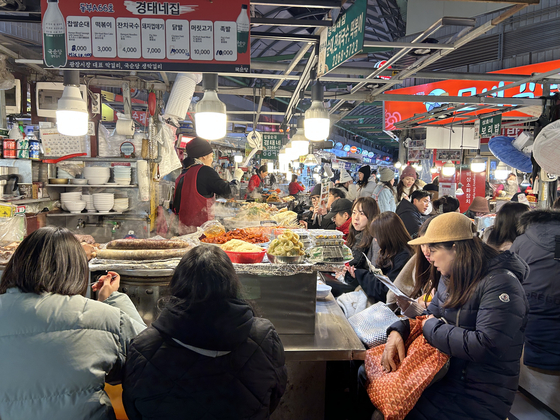Tasting Korea: A Culinary and Cultural Exploration of Korean Street Food [Photo Essay Contest]

The Korea JoongAng Daily hosted its first photo essay contest for elementary, middle and high school students on the theme: “Promote the beauty of Korea to foreign countries." The contest ran from October to November. Photos containing scenes of traditional culture, family love, places to see and tasty treats in Korea were submitted for the contest.
Kim Ryan Jiyul from Seoul Foreign School won the grand prize in the middle school category for this photo essay.
Four years ago, I departed from my tranquil and placid home in Georgia, USA, and moved to Korea. Despite my Korean ethnicity, I had never had a chance to reside in Korea. I anticipated that acclimation to this new and profound world would be challenging for an elementary school boy. While venturing through the civic areas of Seoul, I was mesmerized by tall buildings, vibrant arts scene, advanced technology, and diverse culinary options. Yet, one thing in particular caught my eye: the street food.
Korean street food is everywhere - in every corner, every street, and every city. It’s like the presence of Starbucks in Western culture. It’s a habitual “ritual” to grab some street food after a long tiring day of school or work. As the sun sets, the vibrant street food scene comes to life, attracting people from everywhere. Gathered around the stands, individuals of various ages engage in socializing, playing, and sharing life’s stories. Korean street food is easily accessible to everyone, and most concessions are around $3. For children trying to indulge themselves as well as save up, it’s the perfect culinary investment. You don’t have to pay sizable sums of money to try Korean delicacies, all you need is $3 and the courage to ask for your desire.
Beyond its accessibility, Korean street food boasts a harmonious blend of flavors, styles, and cultural influences. For example, tteok-bokki (chewy rice cakes, seasoned with chile paste), one of the most popular street foods, is traditional Korean food. In contrast, tanghulu, a recently popularized dessert featuring fruits coated with sugar, originated from Chinese cuisine and bungeo-ppang, fish-shaped bun filled with red bean paste, is a fusion of Korean and Japanese cuisines. There are also creative blends with Western cuisines, such as bulgogi sandwiches and kimchi quesadillas. Those familiar with K-pop and K-drama may have witnessed the delightful scenes of people indulging in Korean street food on various TV shows, making it even more attractive to foreigners, including picky eaters.
Moreover, behind the delicious food, we can learn about the dedicated lives of those who tirelessly operate street carts for their families. In a recent conversation with a 50-year-old woman, I learned about her unwavering dedication towards her job, selling 200 fish-shaped buns a day at $1 each to support her kids’ college education fund. The vendors put so much of their unconditional love, time, and effort into this job. For them, it is not merely a job but a way of life.
If you find yourself in Korea, don’t miss out on a splendid opportunity to try some Korean street food. It’s not just about the flavors; it serves as an introduction to the heart of Korean culture. A stroll through the lively streets filled with an abundance.
By Kim Ryan Jiyul, Seoul Foreign School










with the Korea JoongAng Daily
To write comments, please log in to one of the accounts.
Standards Board Policy (0/250자)